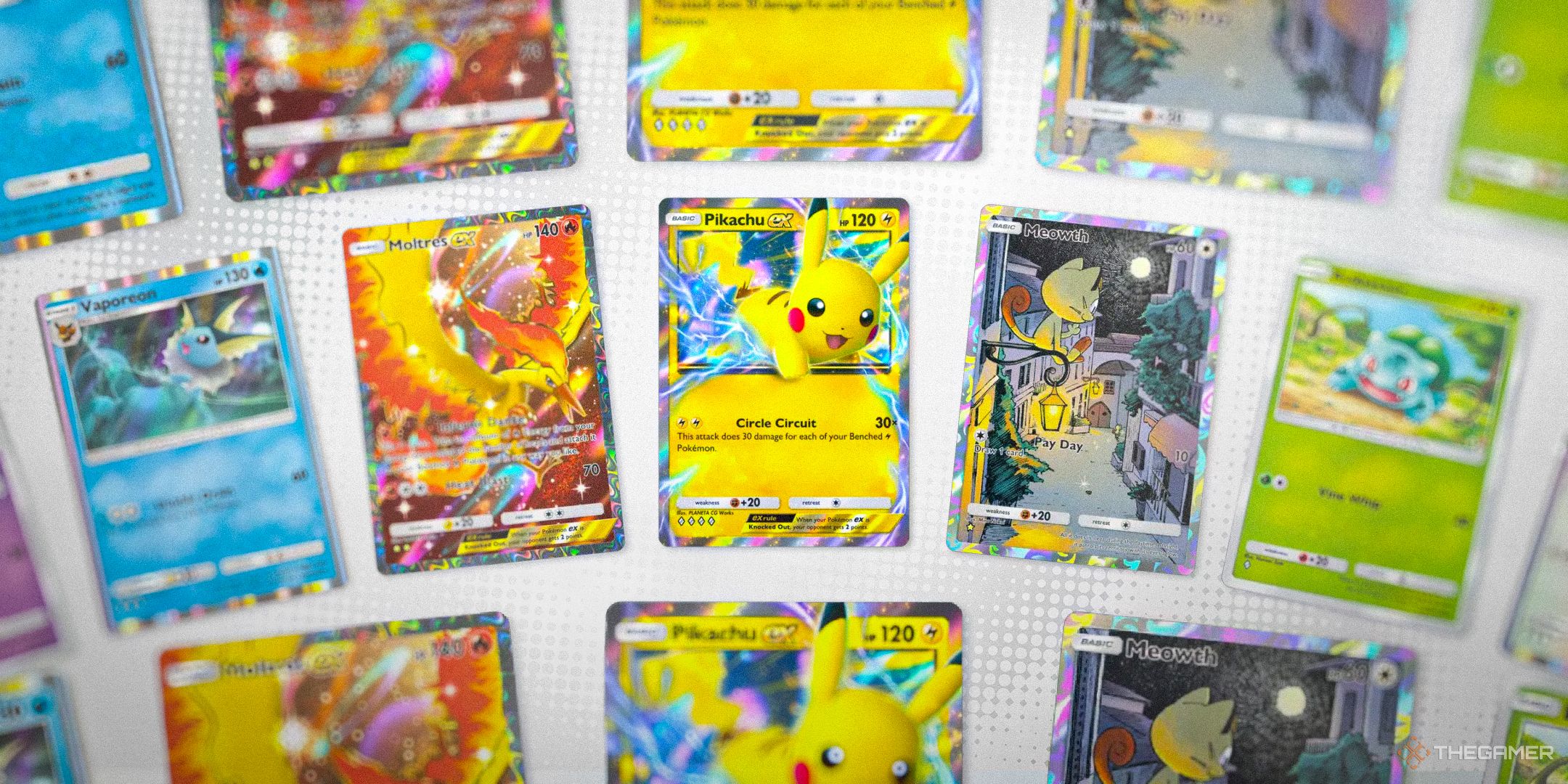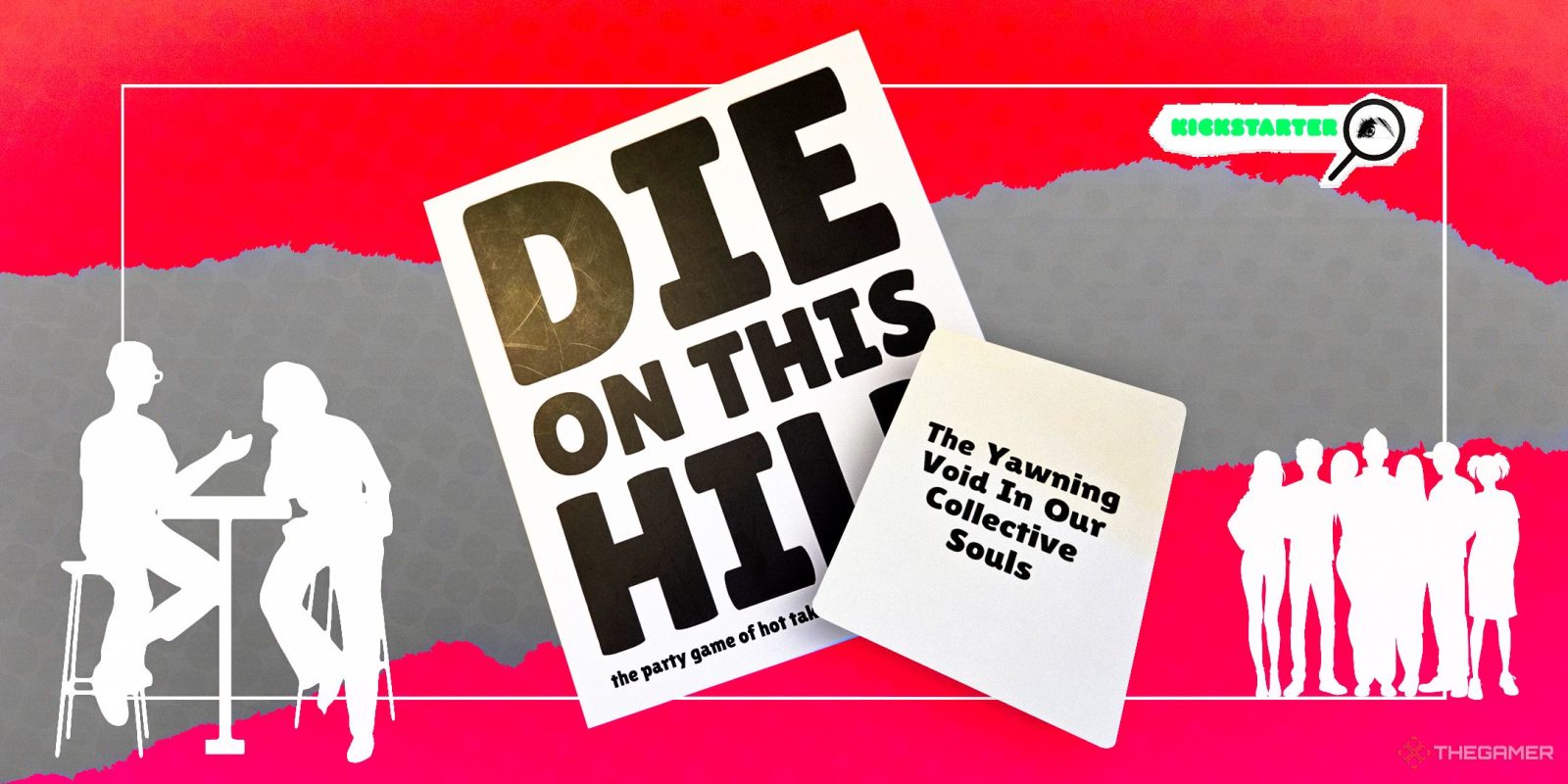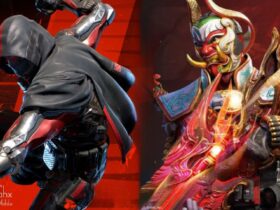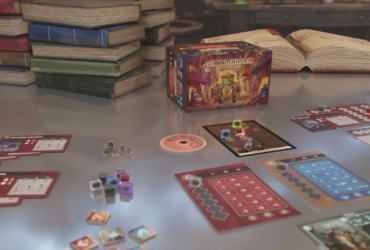Sam Greszes dreamed up Die on this Hill at 2.30 in the morning, after ingesting a substance that is legal where he lives. This past April, he’d been doom scrolling in the middle of the night – “as so many of us often do”, he says – when he had the idea to create a debate game based on the bad faith arguments we see on social media every day.
For him, as for many of us, the horrors of the internet are persistent and all encompassing. “I have a bunch of experience doing community management and running social media for people in the games industry and companies. So I know what I’m talking about when I say that I think social media is a blight on humanity,” he tells me.
But all this toxicity sparked an idea that very nearly escaped him. “I remember having this moment of clarity where I was like, I could either go to sleep right now and let this idea drift away into the beautiful ether of unrealized dreams and projects,” he tells me, “or I could stay up for 15 more minutes, write down a stream of consciousness in my notes app, and come back to it the next morning to see if it’s a good idea.” He chose the second one, and months later, he’s raising money on Kickstarter to fund the game’s production.
What Hill Will You Die On?
Die on this Hill is immediately eye-catching if you’re chronically online. Requiring three to eight players, the object of the game is to collect five Hill Cards by making the most ridiculous arguments you can within 45 seconds, while simultaneously sabotaging your opponents.
The game takes the form of a series of debates, and you have to create your own arguments with the cards you’re dealt. You’ll use three cards in total – a Hill Card (a connecting phrase) and two Debate Cards (subjects) – to create an argument. These can include something wholesome, such as Friendship is Good, or something more controversial, like A Podcast Made By Three Goofy White Boys is the festering rot at the heart of Fascism.
As you make your case against your partner and vice versa, the other players will toss tokens with emojis on them at you, depending on how you made them feel. That might be the poop emoji, an angry face, a thumbs up, a heart… The person who collects the most tokens, regardless of type, during the round secures the win. “That was key from the start,” Greszes says. “I wanted to make sure that you can win by making people really mad at you. Just like real life, any engagement is good engagement, right?”
You also have the option to sabotage the debater. Each player gets a two-sided Action Card, with one side saying Let Me Cook, and the other saying Die On This Hill. Playing Let Me Cook allows you to argue directly against the current argument, but Die On This Hill will let you change the argument and force your opponent to argue something else entirely. Greszes told me that through sabotage, he forced his sister-in-law to argue that The Coolest Guy You Know needs more Misogyny.
You can, in turn, sabotage your saboteur, because why not?

Related
Pokemon Pocket Is Filling The Sticker-Album Shaped Hole In My Life
I know they’re cards, but they feel more like stickers to me.
Winning Isn’t The Point
This is obviously not a serious game where you play to win. In fact, sabotage makes your odds of winning worse, but you’ll probably do it anyway just because it’s funny to watch your friends flounder. Greszes tells me, “I’ve seen people play the sabotage just so they can make a funnier, better argument, even if it doesn’t benefit them, which makes me as a game designer really happy because that means like people aren’t playing the game really to win. They’re playing it to have fun, and that’s the best compliment that I could get.”
Silliness is at the core of Die on this Hill. Even the rules aren’t taking the game too seriously – they tell you that “ad hominem, straw man, and all other logical fallacies are legal and encouraged”, and you’re immediately nerfed by one Hill Card if you were a theatre or debate kid, have taken improv classes, or have a law degree.
Once the game is won, the rules dictate that the winner must “immediately exit the room and take a selfie of themselves touching grass” and email it to Greszes. It’s also made clear that you can play with whatever house rules you want. “I’m not precious about [the rules],” Greszes says with a shrug.
Greszes says he’s very excited to see selfies of people touching grass in his business inbox.
Twitter-Brained Humour
That silliness comes from its social media influence, which is apparent from very first impressions. Many of the cards reference Twitter memes like Bean Dad and 30-50 feral hogs, which sparked days of hilarious discourse familiar to anybody who’d been on the platform at the time. There’s never been a better opportunity to force your friends to listen to your thoughts on weird internet drama.
This might feel it narrows the game’s audience, but Greszes has been careful to ensure that it’s playable even by normal people who haven’t spent the last decade rotting their brains online.
“I wanted to have a good range of things that were pretty universal, like millennials, Gen Z, beer… and then I have cards that are very specific, like The Wreck of the Edmund Fitzgerald, and cards that make reference to internet drama.
“[That means a] range of universal to hyper-specific, so that if the one person who’s into that gets that card, they’ll be really happy… The majority of the cards are timeless concepts that won’t really age. If someone doesn’t get the reference, you can just discard that card and pick another.”
What’s Next For Die On This Hill?
In fact, his goal for expansions is to make the game even more hyper-specific for niche audiences that are into that kind of freaky stuff. While he’s focusing on funding the project for now – the Kickstarter was 73 percent funded a week into fundraising – he’s already been dreaming up the most “esoteric and obscure” collabs possible.
“It would be great if it was super successful and I could partner with frigging DreamWorks and have a Shrek pack. Oh my god,” he tells me, fully enthused. “I’d want to reach out to Heinz to do a condiment pack, like just all about ketchup and mustard and mayonnaise. I might reach out to the [National] Audubon Society to do one that’s just specific birds… Like, talking to Nintendo about doing one but making it specific to Chibi-Robo is the energy. Like, no Mario cards, we’re just doing Chibi-Robo.”
Even the stretch goals speak to hyper-specificity. Each goal reached will mean five extra cards added into the base game, designed by Winslow Dumaine, also known as the ‘Chicago rat hole guy’, Xalavier Nelson Jr. of beloved weirdo indie studio Strange Scaffold, host of Nebula’s Unrated Maggie Mae Fish, and a collaboration with Chicago’s “terrible liquor brand that everyone loves to hate”, Jeppson’s Malört.
But that will come after the game is funded. If you want to bring Die on this Hill to a party with your long-suffering friends, you can back the Kickstarter here until the campaign ends on December 12. Personally, I can’t wait to force my friends to argue that Beyonce is a Giant Mech or something.

Related
Pokemon TCG Pocket Is Not Friendly To My Completionist Pathology
I just want to catch ’em all.
Source link











Leave a Reply